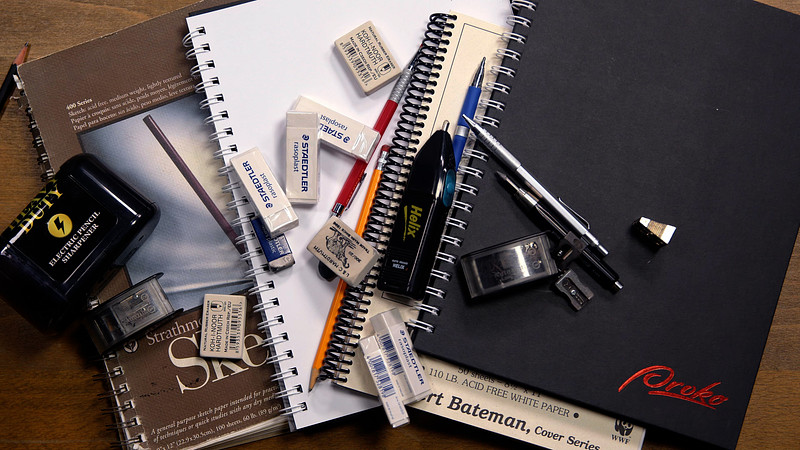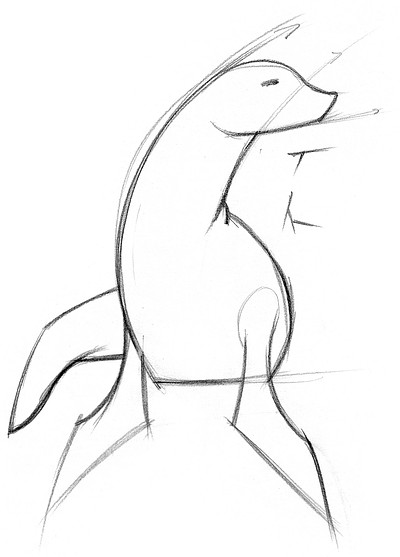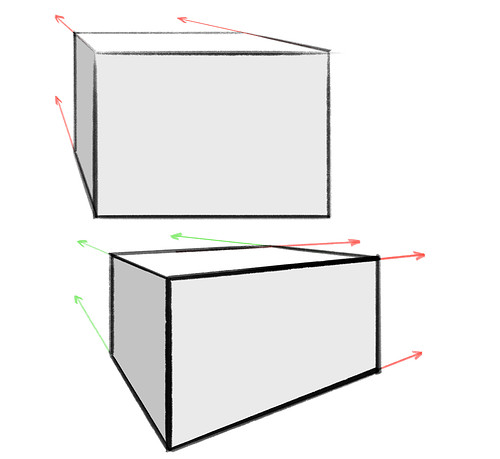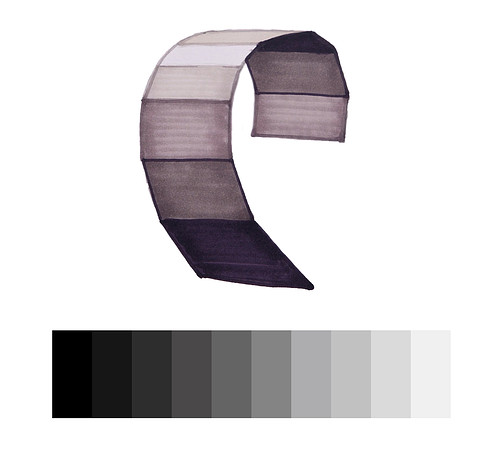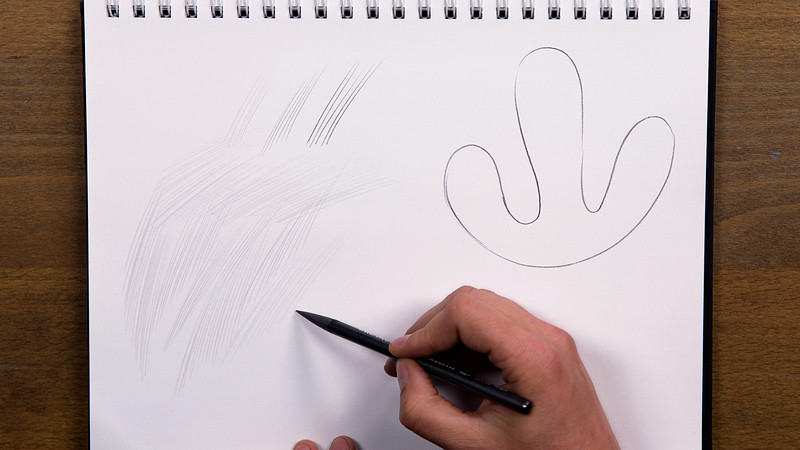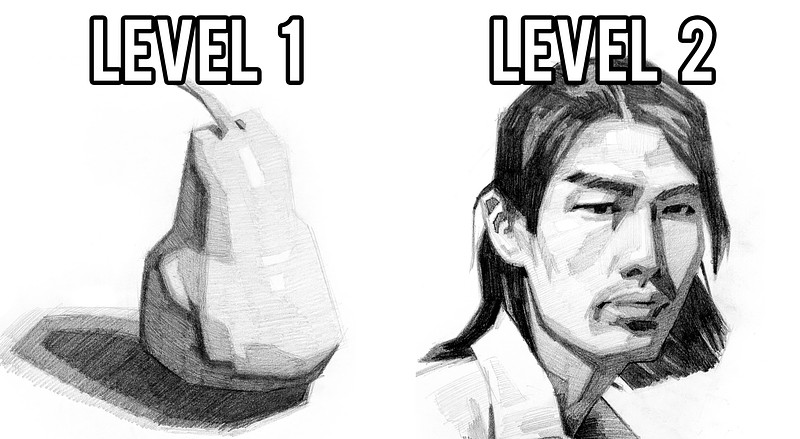Drawing Basics
NOTE: This course was designed so you could enroll at any time and go at your own pace. You can watch lessons that have already been released. Most of the course is already available, with just a few more lesson remaining in the final Edges section.
Drawing is a Visual Language
Anyone can learn how to draw, like anyone can learn how to speak. Drawing is a visual language. If you learn the vocabulary and grammar of the visual language, you can communicate with pictures, using reference or completely out of your imagination!
In this course you'll learn the most important foundational concepts that will allow you to design your own characters, draw them with clean, confident lines, in perspective, and apply shading with all the right elements that reveal clear 3D forms.
What are we gonna do in this course?
The short answer is, draw a lot. But we're not just going to draw without direction..
A lot of artists struggle with the fundamentals early on. Even if you look them up, it's not always clear how to actually practice them.
This course is designed to keep you drawing, without getting burned out or discouraged. It's heavy on information, lame jokes, and highly specific projects that help you apply what you've learned. We're going to build your skills with projects that slowly increase in complexity, making drawing a fun skill that you'll want to develop.
The course has 5 major sections
These are the key concepts you need to understand to draw and sketch anything in 3D.
LINE
I'll teach you the emotional power of lines, all the way we use lines, and start practicing to draw with a tapered stroke. I'll try to get you to develop habits for good line quality, including a bunch of warm-up exercises and master studies. And we'll explore how and why to control line weight.
SHAPE
We'll start by simplifying things into basic shapes. Then we'll learn how to make shapes dynamic and interesting. The importance of silhouettes, and several projects along the way leading to us designing our own characters!
PERSPECTIVE
Structure and Perspective is going to be a large section in the course. We'll learn about 5 ways to create depth, how perspective works, 2 and 3 point perspective, boxes, and cylinders. And then we'll jump into Intuitive Perspective, where we'll toss away any grids or vanishing points and we'll try to develop our ability to imagine 3D form and construct forms freehand, without complex math and grids. We'll learn some tricks and practice a lot from reference and from imagination.
VALUE
Once we're comfortable drawing forms in perspective, we'll move on to Values, our first step to shading those forms. Values are how light and dark things are. So we'll start thinking about the little plane changes on the forms and the relationships of those planes to the light source. It'll be important at that point to start improving our ability to see accurate values, just like how we will train our eye to see accurate proportions in the shape section.
EDGES
The last ingredient to be able to shade light on form is Edges. These are the transitions between the shapes and values. This is important because it tells us about the surface forms within the lines we draw. Edges tell us if this shape is relatively flat, round, or has a sharp corner here.
Core Skill to Draw Anything
The professional artists that you look up to, they've mastered these fundamentals to the point that they're intuitive. When you're done with this course, you can take these fundamental concepts and apply them to character design, portraits, environments, realistic figure drawing, cartooning, and whatever else you want to pursue! Whether you plan on becoming a fine art painter, concept artist, or comic artist, this is the prerequisite course!
These concepts are essential to learning how to paint (digitally OR traditionally). I'm not telling you what to make, I just want to give you the core knowledge you need, and show you how to practice to get good enough to branch off to any specialty.
5 Types of Lessons
- Main Lecture - Every topic will start with a main lesson. These are fast-paced and packed with information. You should take notes and consider re-watching.
- Warmups - Occasionally I'll introduce you to some warm-ups to practice hand-eye coordination and improve your ability to see accurately a little bit at a time. Do these before starting a drawing session to loosening up your arm and focus your mind. You are like an athlete warming up before a game.
- Projects - 1 to 2 assignments per module, each with two difficulty levels.
- Demos - I will actually demonstrate how to do each project so you can check your work, follow along, and get inspiration. Many of the topics have several demonstrations!
- Critiques - Share your work in the community and get seen. I'll pull standout submissions into critique videos. My critique videos focus on common mistakes for each project, so even if it's not your work being critiqued, you will be guaranteed to learn from them.
Projects with two levels
There's even two levels for each project, one for absolute beginners and one for intermediate folks who are here to review and polish their fundamentals. That means you can go through the course twice! First as a beginner and then as an intermediate artist. What? A two in one?!
Beginner Level 1 - Approachable to learn the fundamental skills without too much pressure.
Intermediate Level 2 - Harder versions that push design, accuracy, and speed to take your art to the next level.
And this probably goes without saying, but don't skip the projects... You'll probably improve a little by binge-watching the videos, but you'll get much better much faster if you take the time to practice and internalize each lesson.
If all you have is 30-60 minutes every day after work or school, you have enough time to do this course. If you have more time, awesome.. Spend the time and do it right.
If you commit to this course and follow along with the projects, you will get better at drawing!
As you're learning these concepts, if you get inspired to apply them to your own creative projects or sketches, feel free to do that. You'll learn the concepts even more if you play and experiment.
See you in the course!
Nope! You can join and watch the lessons at any time. This course was designed so you could go at your own pace.
This course is currently active, so if you submit your work for the latest projects, you could be included in the critique videos!
This course will be adding content for a while and you can expect at least one new video every week.
No, it’s a one-time payment and you have access to the ‘Drawing Basics' videos forever. You are essentially purchasing a product. It’s not a subscription.
Yup! Each video is downloadable as an mp4 file at 1080p. Please don’t share the videos. Each purchase helps to create future videos like these.
No, this includes only ‘Drawing Basics' lessons.
Nope! This course is the prerequisite. The only thing you need to take this course is some paper and a pencil.
Absolutely! Just enter in the gift receivers email address at checkout.
Premium videos are extended versions of free videos. This includes additional demonstrations and critique videos. Whenever diagrams or photos are provided, premium students get high resolution versions, which you can download and print for your reference.
The videos are downloadable, so you can watch them without internet access and transfer them to a tablet like an iPad. Going on vacation? Download them so you can watch them on the plane and in that cabin in the woods.
You also get access to 3D models.
Just a pencil and paper will work! But I will go over details of pencils, sketchbooks, erasers, pens, and markers so that you know what's available to you and how to expand beyond a simple pencil to better suit your needs.















